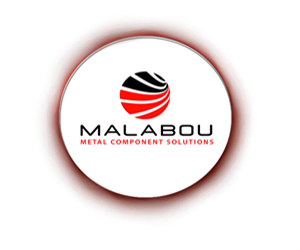Fabrication to Casting Conversion
Converting fabrications to castings can offer a competitive advantage by improving production efficiency, reducing costs, and allowing for more complex and higher-quality products.
Here are some of the key benefits of converting fabrications to castings:
Cost Reduction
 Lower Material Costs: In casting, a mold is created, and the material is poured into it, potentially reducing waste compared to fabrication where material is cut, welded, or shaped.
Lower Material Costs: In casting, a mold is created, and the material is poured into it, potentially reducing waste compared to fabrication where material is cut, welded, or shaped.
 Simplified Processes: Casting eliminates or reduces multiple machining steps, welding, and assembly processes, which can often be more expensive and time-consuming in fabrication.
Simplified Processes: Casting eliminates or reduces multiple machining steps, welding, and assembly processes, which can often be more expensive and time-consuming in fabrication.
Faster Production Times
 Reduced Lead Times: Casting processes, especially for mass production, can be faster than fabrication due to fewer steps involved.
Reduced Lead Times: Casting processes, especially for mass production, can be faster than fabrication due to fewer steps involved.
 Economies of Scale: Once a mold is created, the casting process can be repeated multiple times with minimal setup, which is ideal for large-scale production.
Economies of Scale: Once a mold is created, the casting process can be repeated multiple times with minimal setup, which is ideal for large-scale production.
Reduced Labor Costs
 Automation Potential: Casting processes, especially modern techniques, can be highly automated, which reduces the need for manual labour and minimises labour costs.
Automation Potential: Casting processes, especially modern techniques, can be highly automated, which reduces the need for manual labour and minimises labour costs.
 Less Post-Processing: Fabricated parts often require significant additional work, such as welding, grinding, and finishing. Castings often require less post-processing, saving on labour and time.
Less Post-Processing: Fabricated parts often require significant additional work, such as welding, grinding, and finishing. Castings often require less post-processing, saving on labour and time.
Better Structural Integrity
 Fewer Joints and Welds: Castings tend to have fewer joints and seams than fabricated components, which can improve the structural integrity and reduce the risk of failure at weak points, such as welds.
Fewer Joints and Welds: Castings tend to have fewer joints and seams than fabricated components, which can improve the structural integrity and reduce the risk of failure at weak points, such as welds.
 Internal Strength: Cast materials can be engineered to achieve specific internal properties, such as grain structure and uniformity, contributing to better overall strength.
Internal Strength: Cast materials can be engineered to achieve specific internal properties, such as grain structure and uniformity, contributing to better overall strength.
Minimised Assembly
 Fewer Components to Assemble: In most cases, a casting can replace a series of fabricated parts, reducing the need for assembly labour and potential for errors during assembly.
Fewer Components to Assemble: In most cases, a casting can replace a series of fabricated parts, reducing the need for assembly labour and potential for errors during assembly.
 Integration of Features: Castings can integrate multiple features into a single component, which would otherwise require separate pieces in fabrication.
Integration of Features: Castings can integrate multiple features into a single component, which would otherwise require separate pieces in fabrication.



 Lower Material Costs: In casting, a mold is created, and the material is poured into it, potentially reducing waste compared to fabrication where material is cut, welded, or shaped.
Lower Material Costs: In casting, a mold is created, and the material is poured into it, potentially reducing waste compared to fabrication where material is cut, welded, or shaped.